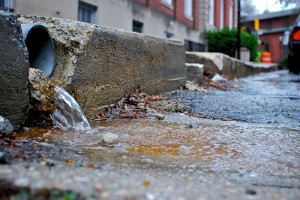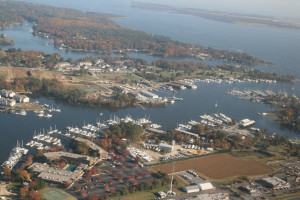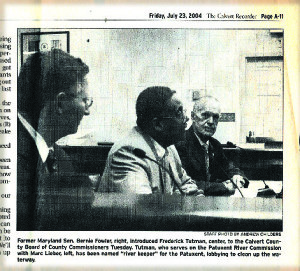Chesapeake Bay Action Plan
After decades of effort, the voluntary, collaborative approach to restoring the health and vitality of the Chesapeake Bay— the largest estuary in the United States—has not worked and, in fact, is failing.
A diverse group of 57 senior scientists and policymakers have joined forces to save the Bay. This is our plan.
The Chesapeake Bay Restoration is in Deep Trouble
The wheels are coming off the commitments by federal and state governments to get the job done and assure a flourishing ecological treasure.
When I joined 700 other hopeful bay caretakers at the signing of the first Bay Restoration Agreement in Virginia in 1983, I was optimistic we would succeed in restoring the bay. If the bright-eyed, full of hope leaders back in 1983 had envisioned a nightmare scenario for the Bay’s future, we are in it now!
Land Use Threatens Chesapeake Bay and Quality of Life
After 50 years of environmental advocacy, I can state unequivocally that the most abused power in the U.S. is the authority over land use given local authorities. Through the centuries, too many local officials have been blinded by greed including campaign contributions, and in rarer cases, bribes, as well as by seeking development at any cost as a goal.
Gerald Winegrad: Bay cleanup is mired in a Chesapeake deadzone
The EPA Bay Program was prodded by Congress in 2006 to begin issuing detailed annual progress reports and assessments with excellent data and no-holds-bar reporting of both failures and successes. This has ended. The EPA assessment is part of the Green Washing engaged in by governors, legislators, and even some in the conservation community to declare success when there is none.
Gerald Winegrad: Neglect fuels Chesapeake oyster collapse. It’s time to close the wild fishery
http://www.capitalgazette.com/opinion/columns/ac-ce-column–20200103-dogxbqhp25dmvdfa3n4k2id3zy-story.html Capital Gazette | Jan 03, 2020 | 9:42 AM Environmentalist Gerald Winegrad plants oyster seed at his dock on Oyster Creek in Annapolis with students. Chesapeake oysters have collapsed to less than 1 percent of their historic populations. Harvests have plummeted to 136,954 bushels in Maryland. In the late 1800s, 20 million bushels were…
Code red: for the Chesapeake Bay
In December 1983, 35 years ago, the bay states and EPA solemnly pledged to restore the bay in signing the first Bay Agreement. President Ronald Reagan budgeted $40 million for the new Bay Program over four years and said in his 1984 State of the Union that: “We will begin the long, necessary effort to clean up a productive recreational area and a special national resource — the Chesapeake Bay.”
These lofty expectations may be crushed…
BAY STATES HAVE MISSED THEIR FEDERALLY REQUIRED NITROGEN REDUCTION BY 50%
SENATOR WINEGRAD QUESTIONS CLAIMS OF VICTORY FOR “RECORD” BAY GRASS COVERAGE SIGNALIZING BAY RECOVERY SUCCESS AMIDST NEWS OF A SHOCKING 42% DECLINE IN ADULT FEMALE CRABS AND MORE RECENT NEWS OF A RADICAL DECLINE OF 50% IN MARYLAND UPPER BAY OYSTER POPULATIONS. IN ADDITION, THE BAY STATES MISSED THEIR CRITICAL FEDERALLY REQUIRED NITROGEN REDUCTIONS BY…
The Only State River Commission in Maryland Just Blinked!
Now we have been given a legal opinion* from the Secretary of the State Planning agency that by statute is charged with staffing and assisting the Commission that says we cannot comment on a really ridiculously bad townhouse development project being planned next to the river…
Perdue: More oysters, not less fertilizer, are solution …
In a recent Baltimore Sun B’More Green blog, Mr. Jim Perdue was interviewed about his vision for the cleanup of the Chesapeake Bay. http://www.baltimoresun.com/features/green/blog/bal-gr-perdue-more-oysters-not-less-fertilizer-are-solution-for-bay-cleanup-20160927-story.html ——————————————————————————————————————————————– OPINION/EDITORIAL Mr. Perdue is attempting to deflect attention away from the Eastern Shore but as long as agricultural pollution remains the number 1 source of pollution to our waterways in…
We are senior Chesapeake Bay scientists and policymakers from Maryland, Virginia and Pennsylvania who have concluded that after decades of effort, the voluntary, collaborative approach to restoring the health and vitality of the largest estuary in the United States has not worked and, in fact, is failing. Our group unanimously recommends that all states draining into the Chesapeake Bay adopt our 25 action items in their Watershed Implementation Plans (WIP) and implement them to improve the Bay’s water quality and to meet the requirements of the Clean Water Act.
Sign up for news & updates from Patuxent Riverkeeper






